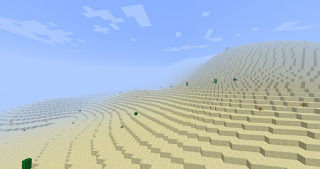Trending
Opinion: How will Project 2025 impact game developers?
The Heritage Foundation's manifesto for the possible next administration could do great harm to many, including large portions of the game development community.

Featured Blog | This community-written post highlights the best of what the game industry has to offer. Read more like it on the Game Developer Blogs or learn how to Submit Your Own Blog Post
Story can be found in unexpected places in games. In this article series, I will discuss my thoughts on finding narrative in surprising places, and applying those structures to your own games.

People think of narrative design as something that Bioware needs, something you look for in a complex RPG. At best, you might get story in a FPS, in a token single player campaign created for the sake of reaching one more demographic.

Waiter, there's a narrative in my soup
Let me ask you: What's the difference between Metroid and Mario? Both are platformers with action-oriented abilities. You run, you jump, you shoot. Metroid has a more diverse set of shooting mechanics, and Mario has a more diverse set of jumping mechanics, but aside from that they're basically the same game from a pure mechanics standpoint. Mario Maker even has several metroidvania stages you can play, further illustrating the similarity between the two games. But what's my point here? This is an article about narrative, why am I talking about platformers?
Well my argument is that narrative and gameplay work in tandem (revolutionary, right?). No one would say that Mario and Metroid are near-identical games. Just looking at them you can tell the differences immediately, the two games are nothing alike! Yet when you break them down into pure gameplay mechanics, as in my above example, they play functionally very similar. So if it's not gameplay, what IS the difference? Well, hopefully by this point you can guess where I'm going; the difference lies in the narrative design. Mario is a game about reaching the end of a level with all the coins and in the fastest time. Metroid is a game about isolation and danger, about surviving in a hostile world using nothing but your own strength. By including strong narrative elements into the game, Metroid (specifically Super Metroid, from this point forward) sets itself far apart from the Mario franchise.
What you'll notice, however, is what Super Metroid doesn't have. It doesn't have cutscenes. It doesn't have story segments or protracted dialogue sequences. Super Metroid tells its story through the environment and through the actions of the player. This isn't the type of story that we identify as being a story, this story is more of a side effect of the gameplay.

There's an evil dragon stealing your Metroid. Need we say more?
Minecraft is another game that tells a compelling story without narrative sections. In Minecraft you dig for resources you need to build structures that allow you to survive, and thrive. If one day you're digging through a mine shaft and all of a sudden you dig through the floor beneath yourself and fall into a pit surrounded by lava and zombies, you might decide that this was a scary event and that it's worth telling your friends about. This is a narrative. Specifically, this is what's called an emergent narrative. It's a narrative that emerged as a direct result of your own actions. Minecraft excels at this type of narrative. By setting up a series of systems for players to use for their interactions with the world, the creators of Minecraft give us the tools we need to tell our own stories, even without the need to tell any story of their own. Minecraft is a sandbox, and we are kids playing with its toys. If something truly interesting happens as a result of those interactions, it's up to us to pass that story along to our friends, and the world at large.

Did someone say sandbox?
But what happens if we invert that flow, and use the emergent narrative to do the storytelling? Instead of simply allowing a player to move around in an infinite world and interact with their specific tools, what if we guided the player into a cave, and incentivized them to dig a hole in just the right spot so that they would fall into a pit surrounded by lava and zombies? There's no need for text here, there's no need for a cinematic sequence to explain the zombies, we just use game and level design tricks to put the player where we want, and let them experience the world for themselves.
This is exactly the type of storytelling that Metroid employs. We don't need to know who the space pirates are, they attack us on sight and we must defend ourselves. We don't need to know how Samus feels, the level and sound design already makes us feel alone (I'll discuss this more later in this series). And Metroid isn't the only game to use this type of storytelling. Journey, Ico, Sword & Sworcery, and others tell their stories with very little text or cinematic sequences, largely relying on the player's actions to convey their story. These games use excellence in narrative design to convey stories through actions, relying on a language unique to video games in order to build a narrative more suited to the medium.
Narrative design is something that can, and should, be found in all sorts of unexpected ways throughout our gaming experiences. In this article series, I'm going to discuss the use of narrative in unexpected places in video games, and offer my thoughts on applying these techniques to your own games.
Read more about:
Featured BlogsYou May Also Like